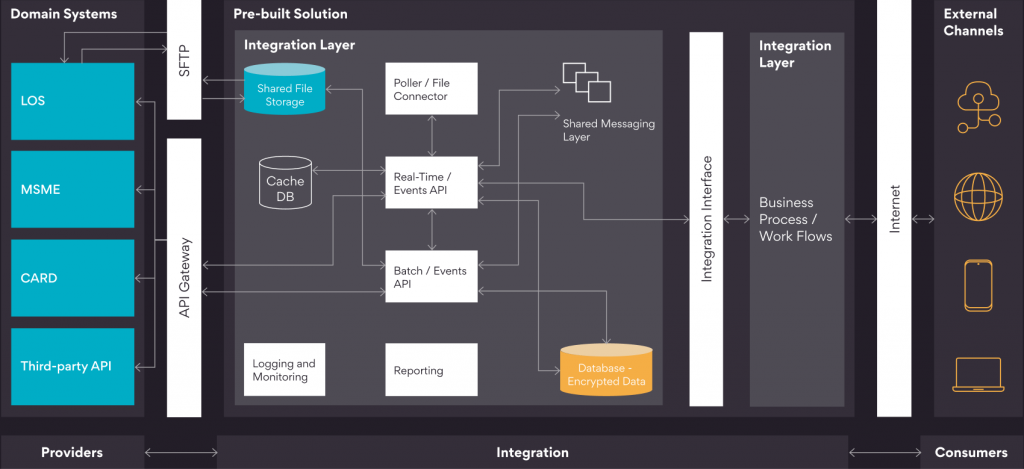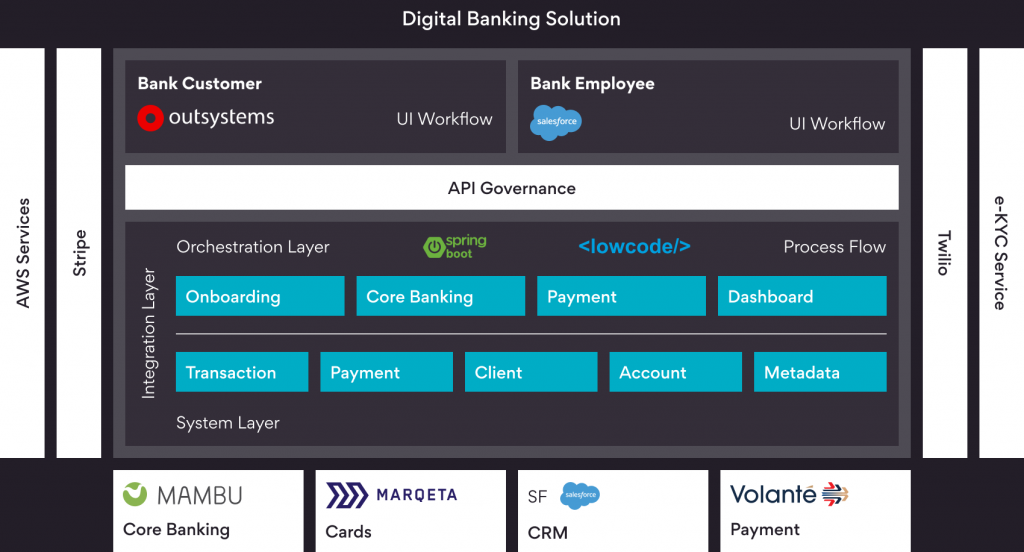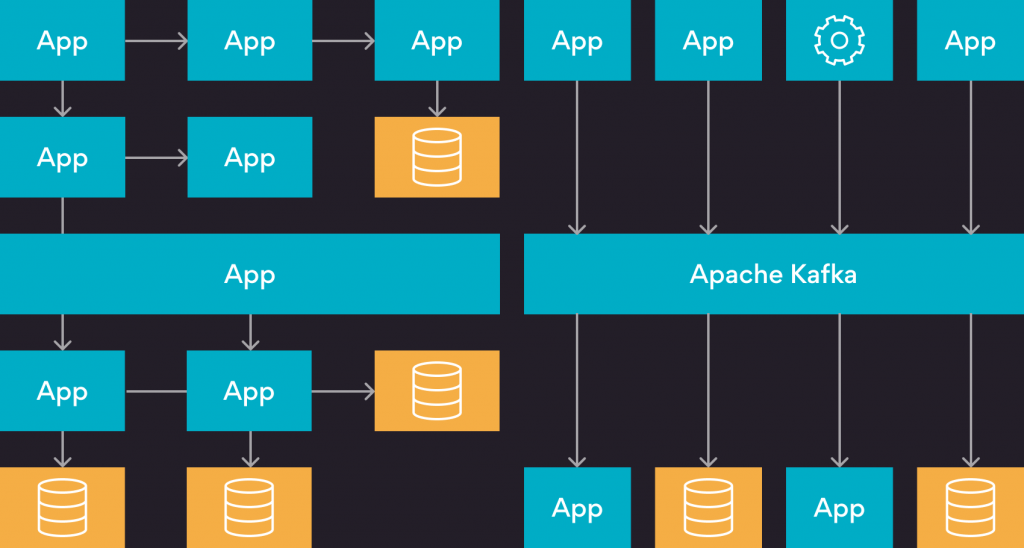In the past, technology teams operated in isolation, and platform choices were dictated by domain architects and their respective capabilities. Today, organizations have shifted toward collaborative approaches, engaging with all business units to embrace the latest technologies and implement digital solutions that harmonize organization workflow management. Achieving genuine digital transformation, an important priority for any enterprise, requires comprehensive end-to-end system integration facilitated by robust integration layers and governance tools — but putting all the pieces in place to achieve this end-to-end harmony can be challenging, as illustrated by the graphic below. However, there is a way forward that can generate real IT and business value, as we’ll explore in this blog.

Familiar Challenges to the Optimal Approach
In the realm of digital transformation, the pivotal challenge lies in identifying the optimal approach and platform, particularly considering the similarities among available options, while still aligning with critical business objectives such as Total Cost of Ownership (TCO) and time-to-market goals. Enterprises usually encounter one or several of these challenges when deliberating on the best way forward.
Build vs Buy Strategy
One pressing inquiry pertains to the enhanced value proposition offered by low-code platforms or Commercial off the Shelf (COTS) products, when contrasted with the traditional customizability of .NET and Java programming at the project level.
Technical Debt of Acquisitions
In many instances, corporate acquisitions compel organizations to undertake a comprehensive architectural shift and revamp their integration layers through a ground-up strategy. The effectiveness of this bottom-up approach hinges on fostering collaboration and active involvement from individual business units and teams throughout the execution process.
Vendor Lock-in
Contractual obligations and proprietary platforms perpetuate challenges with platform maintenance, available skills and support of managed services for infrastructure. The lack of documentation, modern interfaces and APIs (Application Program Interface) require additional efforts to integrate business-critical systems.
Internal Resistance
In large organizations, LOBs (Lines of Business) often adhere to certain patterns, technologies, processes and vendors inside their comfort zone, many for the simple reason that they’ve never been challenged to make changes in any of those areas to create additional value. From an organizational perspective, well-running systems do not prompt a business need for change, leading to integration challenges between various IT systems.
Disruption in Consumers
In a typical ecosystem, many times organizations have less control over service consumers. This requires decoupling consumer and providers using event-based messaging channels, introducing adapters to bridge incompatible interfaces that consumers expect to use.
Our Thought Leadership in Enterprise Integration
At Persistent, we embrace integration challenges and apply our expertise and thought leadership to unlock new innovations. We serve as a catalyst for various use cases with our clients, leveraging our profound proficiency in open-source and low-code platforms.
Our approach centers on acceleration, allowing us to meet time-to-market demands while adhering to industry standards and achieving uniformity through modularized solutions. Our open-for-extension system is a testament to best practices, bolstering the implementation of EIPs (Enterprise Integration Patterns).
EIPs play a pivotal role in guiding decisions when integrating dependent systems, profoundly shaping the architecture of enterprise-wide processes. These patterns encompass diverse integration methods, from database and file-based integration to API- and message-based solutions like queues or topics, along with scheduled-based and real-time integration needs.
For example, by crafting a versatile Integration layer tailored to the banking and finance sector, we empower institutions to seamlessly integrate with platforms such as Salesforce for their employees, leverage Mambu for core banking services, and harness the OutSystems platform to provide a dynamic mobile banking experience for end-users. This transformative approach, as seen in the graphic below, has been instrumental in disrupting the Neo banking fintech landscape, where agility and strategic transformation are of paramount importance.

Our commitment extends beyond platform selection; we also recognize the significance of mitigating infrastructure costs. To this end, we offer cost reduction through the implementation of common Infrastructure as Code (IaC) deployment scripts, designed for container-based deployments. These scripts are seamlessly integrated into our DevOps toolbox, catering to both native frameworks and low-code platforms.
Solve Data Integration with Modern Approach
Integration is sometimes stereotyped as a mesh of different IT services, hence point-to-point application data integrations many times end up as a spaghetti diagram. The complexity increases exponentially when the number of data stores and databases increase in larger organizations. We have implemented Messaging broker and Apache Kafka clusters for many enterprise customers as a solution to this problem, as seen in the graphic below. The messaging cluster not only simplifies the architecture but also keeps scope for future integration.

Reduce Operational Risk The Persistent Way
We at Persistent believe that scope should not be limited to business integrations, and we consider operational objectives in all decision-making processes from the beginning. For example, choosing open source can reduce the development cost but increase the operational efforts in terms of downtime maintenance and regular patch updates. The other operational consideration is End-of-Support (EOS) or End-of-life (EOL) of integration products and runtime infrastructure to receive support services and security updates. Our Track and Trace tools enable monitoring of all products and infrastructure, providing important benefits for operational efficiency. In addition, our experience on different integration platforms gives us deep insights and knowledge on platform migration, as well as monolith to microservice deployments.
Focusing on integration in a digital transformation project offers flexibility to extend existing systems and simultaneously provides options to select platforms of choice. With the right strategy and an experienced partner like Persistent, integration allows customizations and optimal connections with various systems, resulting in lower costs, accelerated time to market and digital transformation success.






